After a comfortable sleep, I got up early to make sure I got to what I wanted to see in Hiroshima. I checked out, dumped my suitcase in left luggage at the hotel and headed to Starbucks in Hiroshima station for a quick coffee and a sandwich. Then I jumped on a tram to the A-Bomb dome in the grounds of the Peace Gardens.

Obviously Hiroshima is famous for what happened to it during the war. But apart from the fact that an atomic bomb had gone off, I didn’t really know that much about it. The A-Bomb dome was being used by the council as public works offices before the bomb went off. Then on August 6, 1945, the bomb exploded, with the hypocentre just being about 160 metres from the building. Everything in surrounding areas was flattened, but because the centre of the building was directly below the blast, it survived.
Now it’s just a mix of rubble, and twisted steel girders. It was pretty surreal knowing that this was the remains of about the only building in the area that was still standing from before that day.
Next I headed in to the Peace Museum. It was undergoing refurbishment, so there was only one building open, which took about an hour to walk around. It basically explained what happened when the bomb went off, the effect it had on buildings, people and the city in general, and then what the long term effects were.
You can’t help but come out of the museum hoping that something like that never happens again, and feeling a bit angry too. Over 140,000 died as a result of the day that bomb went off, and many more are still suffering from diseases as a result. The most upsetting things on display were people – especially childrens’ – belongings. Remains of clothes which had been burn off them, and in one case (below) a tricycle that a little boy had been riding when the bomb exploded. It was harrowing stuff.
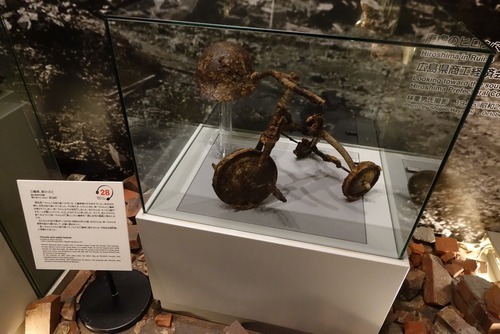
I stopped by a memorial to the victims on my way out of the Peace gardens, and then caught a tram, train and ferry to my next destination – the island of Itsukushima – or Miyajima – as it’s become known. It’s a bit of a tourist trap, but it was home to something I hadn’t seen on my last trip either, and I didn’t want to miss it this time.
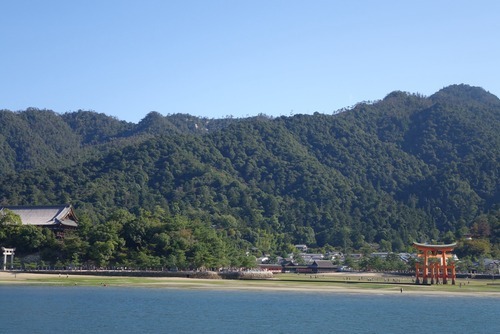
After checking in to my hotel, I made my way along to the red torii gate standing in the sea, which is what everyone comes to see on the island. It’s one of those landmark sights in Japan. Part of the nearby shrine, it was surrounded by tourists, all snapping away. I decided to stay until sunset, and managed to get some good pics.
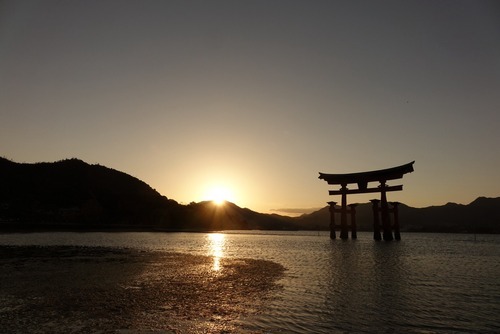
After that, it was down the main street on the island which was FILLED with touristy shops selling rice paddles or spoons.
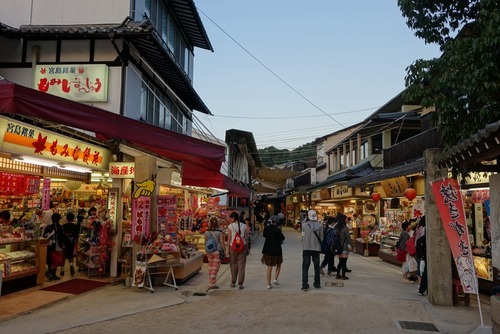
Weirdly, Miyajima is also home to world’s largest rice paddle, as a tribute (I think) to where they originated. I’ll admit, I did buy a rice paddle as a souvenir 🙁
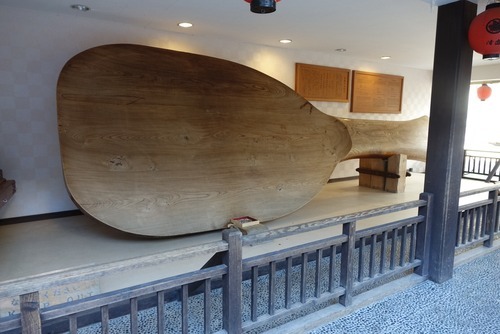
The other thing of note on the island is the amount of deer that roam the streets. They are everywhere! And very tame. And very prone to eating maps from tourists apparently.
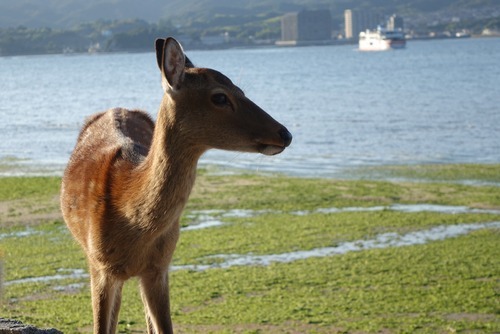
It was time for dinner – which was an amazing eight course meal. Ryokans in Japan (traditional inns) always include breakfast and dinner in accommodation, and the meals are seen as a way of proving the quality of the inn. It was absolutely delicious, and the staff took great care to explain what everything was.
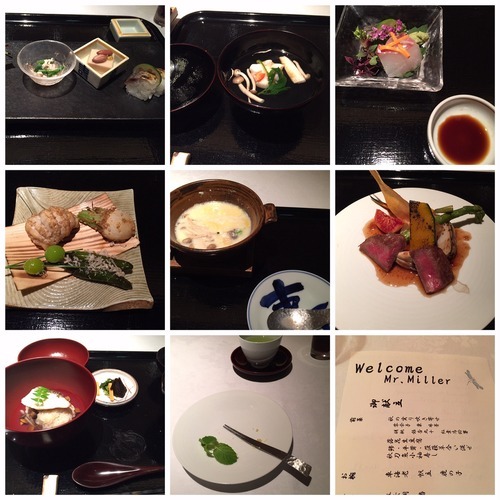
After dinner, I decided to take a stroll back to the torii gate and shrine to see it lit up at night, and then wandered back to the inn.
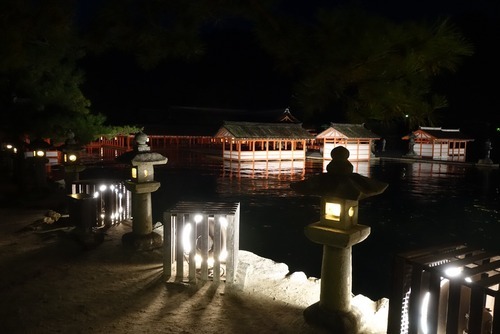
It had an open air bath on the roof, which I was keen to try out.
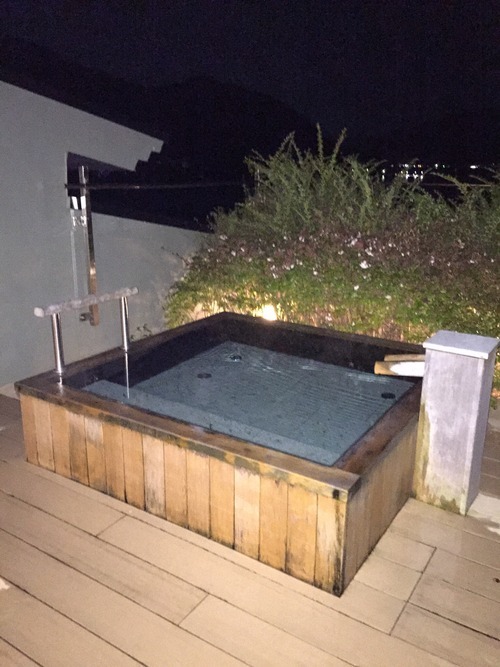
Lying in it, with the tori gate in sight and stars twinkling in the skies above was a very relaxing way to end the day.